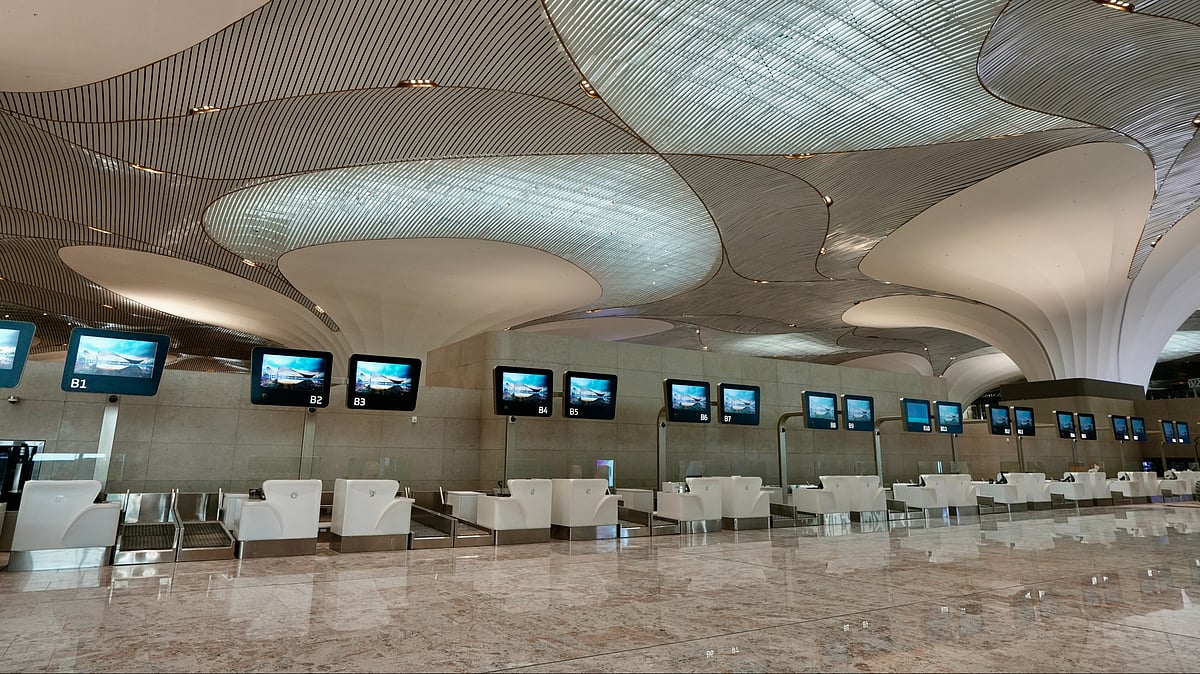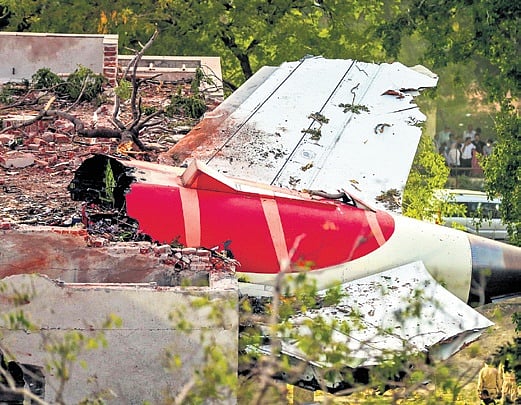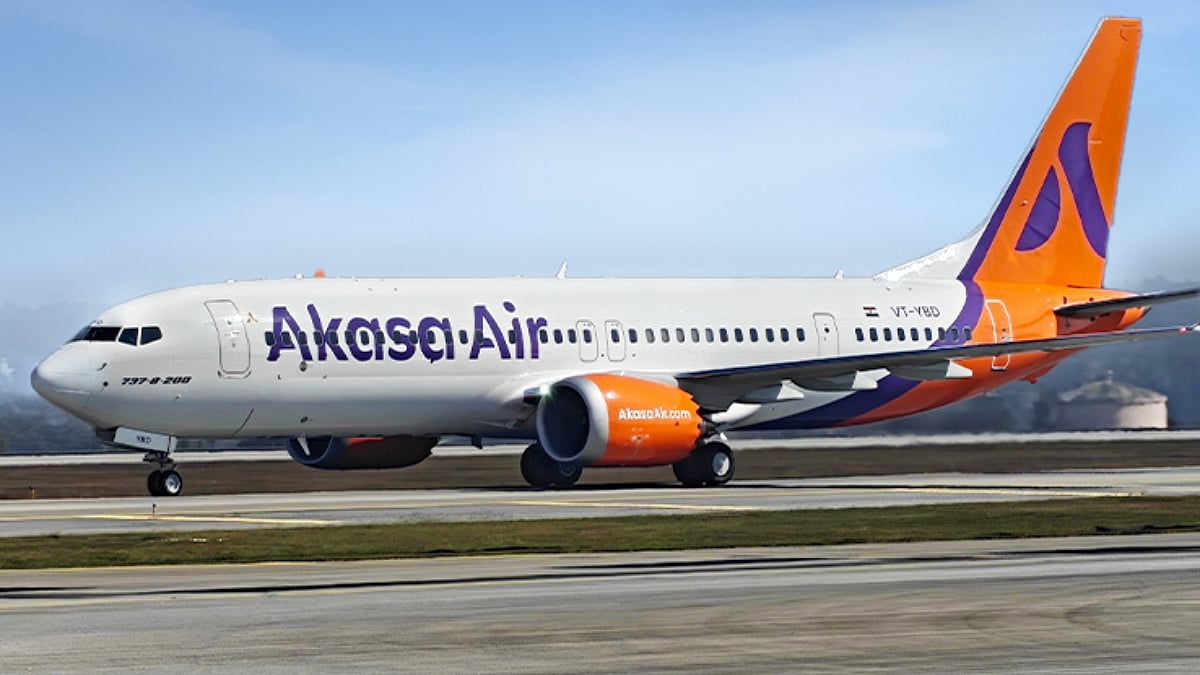**First Flight from Navi Mumbai International Airport Scheduled for December 2025**
Cidco MD and Vice Chairman Vijay Singhal confirmed on Saturday that the first flight from Navi Mumbai International Airport (NMIA) is set to take off in December 2025. He was addressing the media regarding the inauguration of the airport, which is scheduled for October 8. Prime Minister Narendra Modi is expected to land at NMIA at 2:40 pm to mark this historic occasion. Following the landing, he will spend around two hours touring the airport facilities and addressing the public gathered to witness the much-anticipated event.
### A Dream Project Decades in the Making
Conceptualized in 1998 and approved in 2007, NMIA is the result of persistent efforts by numerous stakeholders dedicated to realizing this vision. From persuading villagers of 10 villages to surrender their land, to designing rehabilitation schemes, acquiring land, diverting a lake, and tackling challenging terrain with hard rock hillocks, the project has come a long way and is now ready for inauguration.
### Four-Terminal Structure with Massive Passenger Capacity
Post-inauguration, a security sweep will be conducted by the Central Industrial Security Force (CISF). The first flight is expected in December 2025. NMIA is planned to have four terminals:
– **Terminal 1 (ready now):** Capacity to handle 20 million passengers per annum (MPPA).
– **Terminal 2 (expected by 2029):** Will handle 30 MPPA.
– **Terminal 3 (expected by 2032):** Will handle 20 MPPA.
– **Terminal 4 (expected by 2035):** Will handle 20 MPPA.
Once fully operational by 2035, NMIA will handle a total capacity of 90 MPPA. The airport will also have a cargo handling capacity of 3.2 million metric tons (MMT), with the first phase capable of managing 0.8 MMT.
### India’s Largest and Greenest Airport Project
Situated on 1,160 hectares of land, the total project cost is expected to reach Rs 1 lakh crore upon completion. The first phase alone has cost approximately Rs 19,647 crore.
“This airport will be an aviation hub of global significance, boasting double the capacity of Chhatrapati Shivaji Maharaj International Airport (CSMIA). Together, both airports will handle 150 MPPA,” said Singhal. NMIA features two runways, each 3,700 meters (3.7 km) long, connected by dual parallel taxiways and rapid exit taxiways. The southern runway will be operational from the first phase.
Comparing NMIA to London’s Heathrow Airport, Singhal noted, “Heathrow has a capacity of 85 MPPA and five terminals, while NMIA will have a capacity of 90 MPPA with four terminals. All terminals will be connected via an Automated People Mover (APM), a driverless underground train.”
### A Green, Tech-Driven Airport Experience
With NMIA’s inauguration, Mumbai Metropolitan Region becomes the only Indian city with two airports. NMIA emphasizes sustainability and advanced technology:
– Uses sustainable fuel with dedicated storage facilities.
– Generates 47 MW solar power, making it a green airport.
– Operates 100% electric vehicle (EV) buses.
– Features curated digital and physical art installations showcasing Maharashtra’s and India’s cultural heritage.
– Incorporates future-ready technologies for seamless digital retail, duty-free shopping, baggage handling, and lounge check-in.
In its first phase, NMIA will operate with:
– 29 contact aircraft stands,
– 13 remote commercial stands,
– 7 cargo stands,
– 38 general aviation stands supported by 15 GA hangars.
Parking facilities include spaces for 1,500 cars, 20 buses, and 20 trucks. In later phases, a fully developed General Aviation Terminal with approximately 100 GA stands will be built to serve VIP and private aviation needs.
### World’s First Multimodal Airport Connectivity
NMIA is set to become the world’s first multimodal airport connected by road, metro, rail, and water.
Besides the Atal Setu and Amra Marg roads, eastern connectivity will be developed. Major infrastructure projects like the Atal Setu, Ulwe Coastal Road, and the proposed Thane–NMIA Elevated Corridor will provide signal-free road access.
Metro Line 8 and extensions of the Navi Mumbai Metro will connect the airport directly to Mumbai and CSMIA by 2031. Suburban rail access will be available via Targhar and Khandeshwar stations.
Furthermore, the proposed Mumbai–Hyderabad High-Speed Rail Corridor will pass near the airport’s eastern perimeter, featuring a planned underground station for rapid access to other regions of India.
Additionally, Targhar creek is planned for water taxi services connecting to the Radio Club jetty at Gateway of India. Facilities for check-in will be available at the jetty and metro stations.
### AI, Automation, and Enhanced Passenger Experience
An app developed by the Adani Group is being designed to offer end-to-end baggage tracking, minimizing baggage handling time. AI-based queue management and parking systems will allow passengers to pre-book parking spaces.
Once fully completed, NMIA will have the capacity to park 348 aircraft, including:
– 138 contact stands,
– 108 remote stands,
– 93 general aviation aircraft,
– 10 cargo aircraft.
With its comprehensive infrastructure and cutting-edge technology, NMIA is poised to become a major aviation hub that boosts regional connectivity and passenger experience.
—
*Mahesh D More*
https://www.freepressjournal.in/mumbai/first-flight-from-navi-mumbai-international-airport-set-for-december-2025-confirms-cidco-chief



